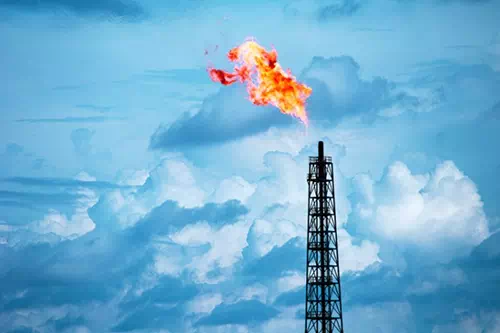

|
Overview Natural Gas Natural gas is a naturally occurring hydrocarbon gas mixture consisting of methane, some amount of other hydrocarbons (usually ethane, but also propane, butane, pentane, etc.) and other impurities (e.g., carbon dioxide, nitrogen, hydrogen sulfide, etc.). It is widely used as an important energy source in many applications:
Most natural gas is created by two mechanisms: biogenic and thermogenic. Biogenic gas is created by the anaerobic decay of non-fossil organic matter (i.e., methanogenic organisms in marshes, bogs, landfills, and shallow sediments). Thermogenic gas is found at greater depth (i.e., greater temperature and pressure) and is created from buried organic material. This Portal is concerned with those activities associated to obtaining thermogenic gas. Natural gas can be "associated" (i.e., found in oil fields) or "non-associated" (i.e., isolated in natural gas fields). It also can be found in coal beds; such gas is called coalbed methane. Due to the different types of gas sources, natural gas can vary from a gas that is mostly methane ("dry gas") to a mixture of hydrocarbon compounds with quantities of various non hydrocarbons. This mixture can exist in either a gaseous or liquid phase or in solution with crude oil in porous rock formations. Because of differing reservoir temperature and pressure conditions, which change over time as the gas and liquid are removed, there will be varying amounts of extractable hydrocarbons present in the liquid phase of the "wet gas". Natural gas resources which require greater than industry-standard levels of technology or investment to harvest are known as "unconventional gas" resources. The three most common types of unconventional gas resources are tight sands, coalbed methane, and shales. Crude Oil Crude oil is another naturally occurring mixture of hydrocarbons that is processed (refined) to produce a wide range of products. Crude oils contain hundreds of different hydrocarbons and other organic and inorganic substances including atoms of sulfur, nitrogen, and oxygen, as well as metals such as iron, vanadium, nickel, and chromium. The petroleum industry often characterizes crude oils according to their geographical source, e.g., Alaska North Slope Crude. The geographic location serves to classify crude oils according to viscosity, volatility and toxicity. When crude oil is first brought to the surface in at an oil well, it may contain a mixture of natural gas and produced fluids such as salt water and both dissolved and suspended solids. At land-based operations, natural gas, if present, is separated at the well site. Water and solids are also separated. The crude is at least 98 percent free of solids after it passes through this onsite treatment and is prepared for shipment to storage facilities and ultimately refineries. Oil can be found in tar sands, which are porous rock (sandstone) structures on the surface to 100 meters deep. The material is fairly viscous and also is fairly high in sulfur and metals. Although the Athabasca region in Canada is the primary area of significant tar sand mining, there are some deposits in the western United States. Oil may also be extracted from oil shale. These deposits may be 10 to 800 feet below the surface and can be removed by surface mining or subsurface excavation. The oil, in a highly viscous form called kerogen, is usually heated to allow it to flow. Because only approximately 30 gallons (less than a barrel) are produced per ton of shale, the process is costly, and the oil shale mining industry is currently only a minor contribution to the domestic oil supply. Both crude oil and natural gas extraction, production and processing operations can result in a number of potential impacts to the environment, including:
In general, this website organizes the activities involved in obtaining and making crude oil and natural gas marketable into the following technical topics: Exploration and Development Well Production Processing Final Processing at Gas Plants |
Funded by EPA through a Cooperative Agreement
|
 |
||
About | Technical Topics | Federal Statutes & Regulations - US EPA | Federal Statutes & Regulations - Non-EPA | Emergency Response |
|
EPA Resources | State/Local Resources | Other Resources | Acronyms | Search | Disclaimer | Home



